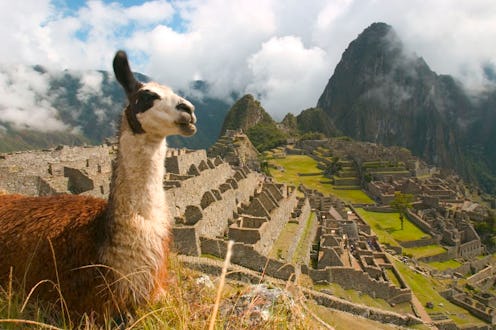Books
Reading an Author in His Native Country

You know you’re a book nerd when, even if you’ve been to a place, you feel like you don’t really know it until you’ve read its literature. My latest trip, though, might make me question that philosophy.
Before leaving for vacation in Peru last week, I made sure to pick up a copy of Aunt Julia and the Scriptwriter by Mario Vargas Llosa, winner of the Nobel Prize for Literature and Peru’s most famous novelist. After all, I reasoned, I’m only going to be there a week and I’m going to be doing mostly touristy stuff; I owe it to myself to try to dig a little deeper into this country, even if this is supposed to be just a relaxing vacation.
And on the whole, I’m glad I did, even if the book was in some ways very jarring. I’ve read Mario Vargas Llosa before and never been a huge fan. There’s a lot of machismo that runs through his writing, and in certain works some outright misogyny (*cough* The Bad Girl *cough*). But that doesn’t mean I don’t think he’s not a hell of a writer.
Aunt Julia and the Scriptwriter is an interesting yet strange story, but more to the point it painted a picture of a Peru that I just wasn’t seeing. Vargas Llosa’s story is set in mid-20th century Lima, and situated firmly amongst the upper (and sometimes middle) class. Even though the young protagonist worries often about financial ruin, with his wealthy parents and extended family, it’s a very different sort of financial ruin than the kind I was constantly experiencing through train windows and in the makeshift markets near tourist sites.
In a bizarre twist, I felt that I could probably identify with this novel better than many Peruvians I met. The story, after all, is about a young writer without much direction in his life whose parents want him to go to law school. Yeah, doesn’t sound at all like me.
I am glad that I read this book, though, and I’m glad I read it when and where I did. If I hadn’t, for instance, it might never have occurred to me that I was picturing the characters, even the rare lower class ones, as white. Trying to reimagine them with the faces around me forced me to ask some tough questions about my own internalized cultural beauty standards. Why isn’t it natural to picture the pretty girl in a side plot with dark skin and indigenous features? Why, even when these are the faces all around me, is it still hard to assign them to the characters in my head?
It's these sorts of questions that make reading abroad informative and thought-provoking, and that expand your mental horizons in ways its hard to do from an armchair in your living room.
But overall, I often felt that I was getting more glimpses of the “real Peru” (whatever that might be) by my own touristy travels than through my page turning. After all, the characters in Vargas Llosa’s novel are much more likely to speak French or English or both than to speak Quechua, the local language of the Andes, which was spoken by most of the people I met. More disturbingly, I feel like Vargas Llosa would actually prefer it if people spoke European languages instead of native ones. At least that's the impression I've got from his books that I've read so far. Whereas everyone I spoke with on my trip, from the guides to the drivers, even the young man I chatted with in the Plaza de Armas who said that he loved Mario Vargas Llosa, all showed immense pride in their Inca heritage and indigenous history, Vargas Llosa is much more oriented towards European culture and ideals.
It’s strange to have literature stand so starkly in contrast to the lived reality of a place. In all my reading and all my travels, I’ve never encountered something quite like it. I’m not going to say that I’m disenchanted with books as a way of better understanding places and cultures I’m unfamiliar with, but it is good to be reminded, I suppose, that each book only offers us a sliver of the picture, each author only one viewpoint.
The best way to learn about the world might just be to go and see it for yourself. Who would have figured?